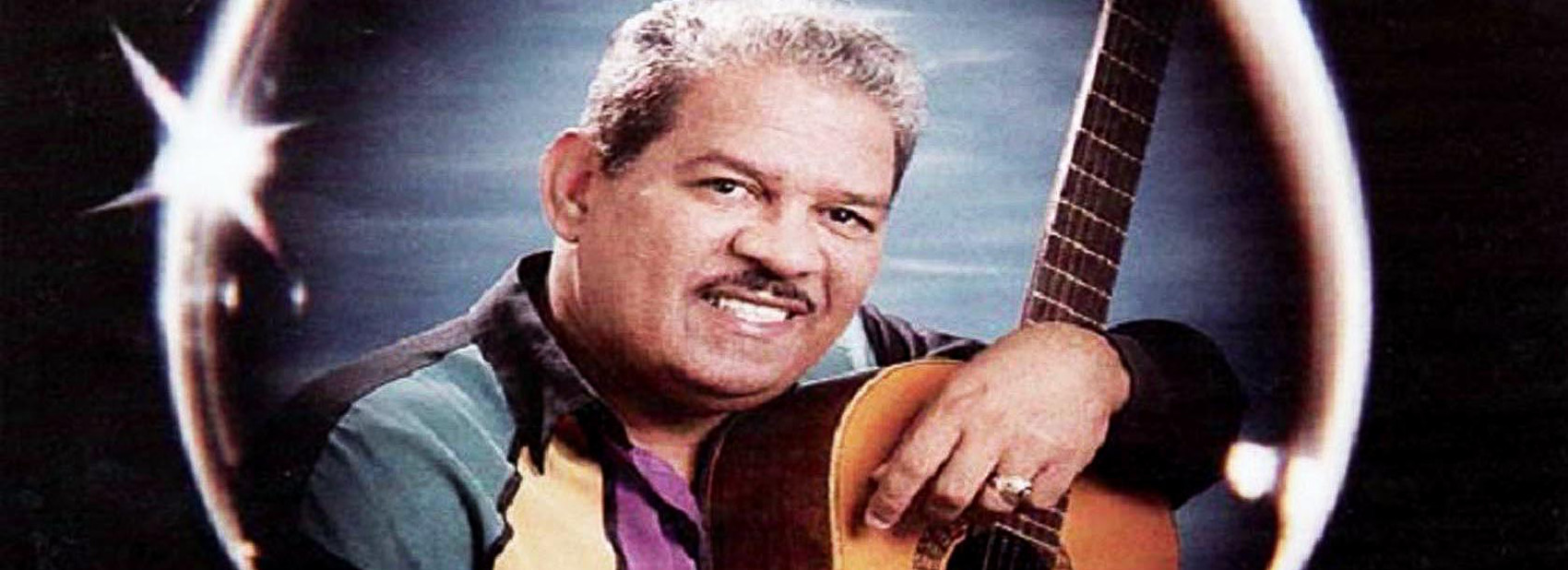
In bachata’s early years, any number of influential artists made their impact on the genre. Luis Segura has been dubbed “The Father of Bachata” for the impact of his melodramatic vocal interpretations, as well as his longevity; Edilio Paredes and Augusto Santos both played pivotal roles, as musicians and arrangers, in forging the music’s stylistic framework. Cuco Valoy is unique in having acted as promoter, radio personality, distributor and recording artist during bachata’s infancy. There is much room for debate as to which of these bachateros has had the greatest influence on the genre’s development. There is no debate at all, however, as to the fact that the first bachata to be regarded as such was not recorded by any of them, but by José Manuel Calderón on May 30th, 1962, in the studios of Radiotelevisión Dominicana (Borracho de amor and Condena).
The style of music which the San Pedro native recorded was much closer to bolero than to the spare two-guitar arrangements of bachata at its most recognizable. Unlike many later bachateros, Calderón did not sing in a fine, tenor voice but rather in a rich baritone reminiscent of Mexican singers like Pedro Infante. Many of his arrangements included string sections, horn sections or a piano, although one uniquely Dominican innovation in Calderón’s music was the use of the güira instead of the maracas to mark the time. Unlike other bachateros, Calderón has recorded with a güira from day one. His music was also received as bolero, without the stigma that bachata would come to bear, both by the public and by his fellow artists. He recorded “Por seguirte” in 1966 accompanied by Johnny Ventura’s orchestra, and Puerto Rican bolero great Felipe Rodriguez was instrumental in promoting “Llanto a la luna”, probably Calderón’s best-loved song. Calderón went on to cultivate a lifelong friendship with Rodriguez, whose style is quite similar to his own. In the year after his ground breaking first recording, he released four singles, each of which went on to become a classic not only in the genre but in Dominican culture in general—Quema esas cartas, Lagrimas de sangre, Serpiente humana and Llanto a la luna. According to Calderón, he went on to record forty-two successive singles which were all, by the standards of bachata’s rather informal economy, number one hits.
Working before the marginalization of the genre, Calderón enjoyed privileges which would be unavailable to later bachateros, recording with international labels like Kubaney. In 1967, he traveled to New York to record with the BMC label, and he decided to remain there with his lead guitarist, Andres Rodriguez. Over the next five years Calderón was a fixture in a music scene which primarily revolved around well-known Puerto Rican boleristas like Felipe Rodriguez, Blanca Iris Villafañe, Tommy Figueroa and Odilio Gonzalez. In this company he played venues like Teatro Riopiedras, Teatro Jefferson and the legendary Teatro Puerto Rico.
In 1972, Calderón returned to the Dominican Republic to find a substantial change in bachata’s fortunes. The music had by then become marginalized, associated with prostitution and poverty, and only one nationwide radio station, Radio Guarachita, played the music. The relegation of bachata to a music of “la mala vida” in turn affected the public’s perception of Calderón, who was categorized with other bachateros whose styles were considerably more decadent than his own. The music that he made, however, began to change as the genre changed, and his songs from this period tell the story of life in the brothel and barrio in much the same way that other bachateros’ music does (La saqué de la barra, Bebiendo en la barra). These songs were commercially successful, but did not become classics of Dominican popular culture the way his early hits had. The situation was difficult enough to encourage Calderón to return to New York, where he watched a Dominican community grow in Washington Heights and give rise to a fledgling bachata scene there as well. Where he had once played for Puerto Rican audiences alongside Odilio Gonzalez, he now played for Dominican audiences in El Internacional, later to become El Restaurant 27 de Febrero.
The advent of the electric guitar in bachata seemed to eclipse the style of Calderón and other pioneers. However, with the acceptance of the genre in recent years, he has begun to receive some small part of the recognition warranted by his classic repertoire, and by his place in history as the first person to record what we now know as bachata. Almost any event which claims to celebrate the music’s long and difficult story must include him in the lineup of performers, and in recent years he’s played on the stages of the Teatro Nacional, Gran Teatro del Cibao and Lehman and Hostos colleges. Calderón continues to record and distribute his own recordings, and he is currently engaged in constructing his own web site.
-- David Wayne
Es uno de los mejores bachateros, lo que lamento es que ya no esta grabando.
me gustaria saber el itinerario de este gran artista para este mes de diciembre.. gracias.
hola jose tu musica es la mejor mejusta mucho mi tio le gustaba esa cansiones tu ya.
hola tengo 21 años y me fascinan las bachatas de jose m. c. y a mi familia tambien de ellos aprendi a escuchar este tipo de musica k deja mucho k decir
Me gusta estos musica muchisimo. Buen trabajo Senor Calderon!!!
I LOVE ALL HIS MUSIC
me ha encnatado lo poco de la biografia de jose manuel calderon me enata esa musica de esa epoca no se puede comparar con la de ahora por que la de atra es mucho mejor y con mejor letra y sentimiento
yo necesito el itinerario para este mes de diciembre de jose manuel calderon para llevar a mi madre que es admiradora de este artista.
ESTEES EL MEJOR BACHATERO DE TODOS LOS TIEMPOS
por fabor pongan mas cancionede josemanuel calderon gracia
Add new comment